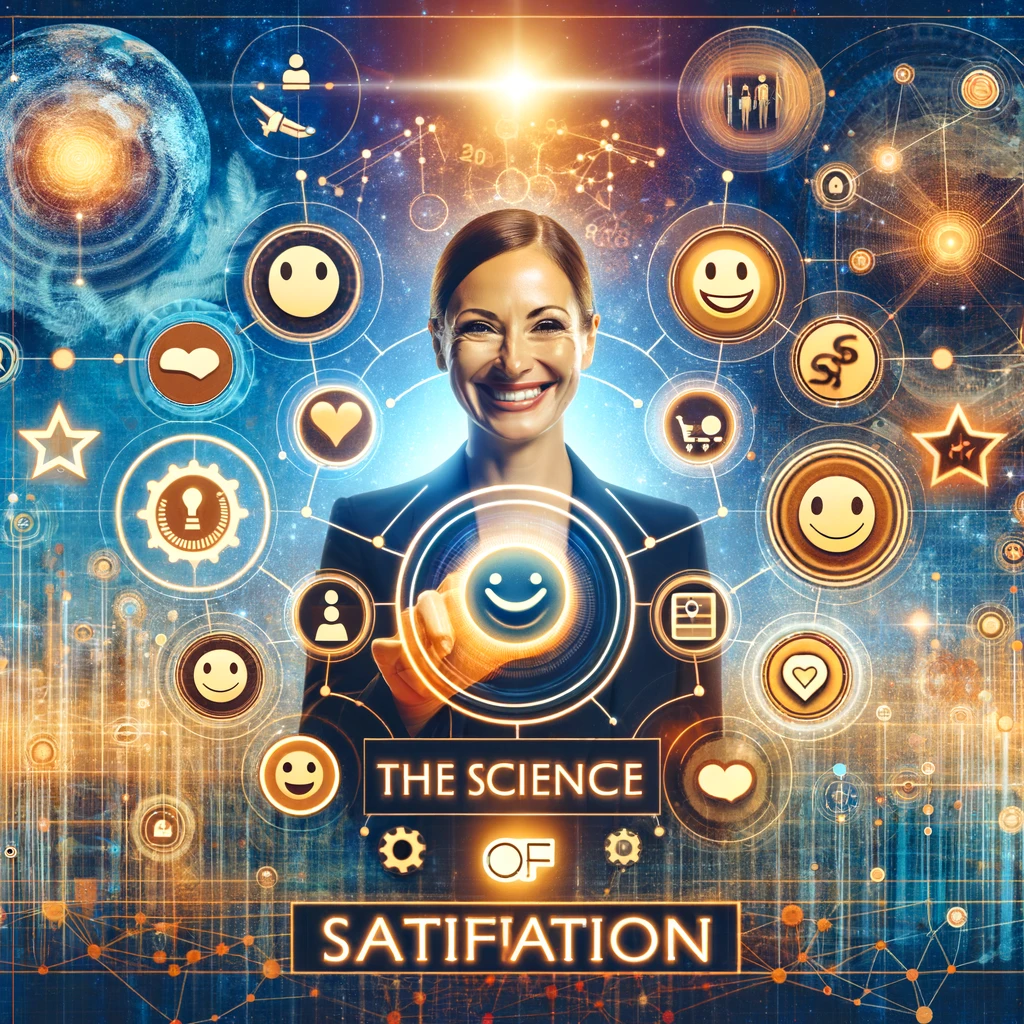The Science of Satisfaction: Implementing Customer Experience Design
In today’s hyper-competitive marketplace, the key to sustainable business success lies not just in the quality of the product or service offered but in delivering an unparalleled customer experience. “The Science of Satisfaction: Implementing Customer Experience Design” emerges as a critical strategy that businesses must embrace to stand out. This comprehensive guide delves into the multifaceted approach of enhancing customer satisfaction through intentional and strategic experience design. From understanding the psychological underpinnings of customer interactions to leveraging technology for personalized experiences, we explore the essential components of creating a journey that not only meets but exceeds customer expectations. Join us as we unravel the science behind customer satisfaction and provide actionable insights on implementing effective customer experience design in your business strategy.
Understanding the Science of Satisfaction in Customer Experience
Delving into the science behind “The Science of Satisfaction: Implementing Customer Experience Design” . Is crucial for businesses aiming to create exceptional customer journeys. To achieve this, it is essential to comprehend the psychological foundations that shape customer satisfaction and establish metrics that accurately measure the success of customer experience strategies.
The Psychological Foundations of Customer Satisfaction
At the core of customer satisfaction lies a deep understanding of human behavior and expectations. Consequently, businesses must explore the psychological principles that influence how individuals perceive and evaluate their interactions with a company. By analyzing factors such as cognitive biases, emotional responses, and decision-making processes, companies can gain valuable insights into shaping experiences that resonate with customers on a deeper level. Furthermore, recognizing the impact of cultural and societal norms is crucial for tailoring experiences to diverse customer segments.
Benchmarking Success: Metrics That Matter in Customer Experience Design
To effectively implement “The Science of Satisfaction: Implementing Customer Experience Design,” businesses need to identify and track key performance indicators (KPIs) that accurately reflect customer satisfaction levels. These metrics may include measures such as Net Promoter Score (NPS), Customer Effort Score (CES), and Customer Satisfaction (CSAT) ratings. Additionally, incorporating qualitative data from customer feedback and sentiment analysis can provide a more holistic understanding of the customer experience. By continuously monitoring and analyzing these metrics, companies can make data-driven decisions to optimize their customer experience strategies.success.

The Pillars of Implementing Customer Experience Design
Successful implementation of “The Science of Satisfaction: Implementing Customer Experience Design” rests on two fundamental pillars: personalization and the strategic integration of technology. These key elements enable the creation of memorable and enriching customer experiences.
Personalization: The Heart of Customer Satisfaction
Personalization is essential to delivering a truly satisfying customer experience. By understanding the unique preferences, needs and behaviors of each customer, companies can tailor their interactions and offers in a relevant way. This reinforces the feeling of being valued and understood, a key factor in customer satisfaction and loyalty. Consequently, “The Science of Satisfaction: Implementing Customer Experience Design” advocates the integration of personalization as a cornerstone of customer experience strategy.
The Role of Technology in Enhancing the Customer Journey
What’s more, technological advances offer new opportunities to dramatically improve the customer journey. The judicious integration of digital solutions, data analysis tools and customer engagement platforms makes it possible to streamline and optimize every touch point. In this way, technology facilitates the implementation of “The Science of Satisfaction: Implementing Customer Experience Design” by offering fluid, intuitive and highly personalized experiences.
Case Studies: Successful Implementation of The Science of Satisfaction
While the principles of “The Science of Satisfaction: Implementing Customer Experience Design” may seem theoretical, numerous businesses have successfully applied these concepts to drive tangible results. These real-world examples illustrate the transformative power of intentional customer experience design.
Transforming Theory into Practice: Real-World Examples
A leading e-commerce retailer revamped its online platform with personalized recommendations and omnichannel integration, boosting satisfaction and loyalty.
A multinational hotel chain enhanced guest experiences with virtual concierge services and smart room automation, leading to more positive reviews and repeat bookings.”The Science of Satisfaction: Implementing Customer Experience Design” showcases these successes.

Overcoming Challenges in Customer Experience Design Implementation
Despite the recognized significance of “The Science of Satisfaction: Implementing Customer Experience Design,” businesses often face obstacles in effectively executing these strategies. However, identifying and addressing common challenges is crucial for successful implementation.
Identifying and Addressing Common Obstacles
One of the primary hurdles is resistance to change within an organization. Transitioning to a customer-centric mindset requires a cultural shift, which can be met with hesitation. Moreover, limited resources, budget constraints, and technological limitations can hinder the adoption of new customer experience initiatives. Additionally, gathering and analyzing customer data to inform experience design can be challenging, especially with data siloes and privacy concerns. Nevertheless, by fostering open communication, providing employee training, and investing in the right tools and technologies. These obstacles can be overcome, allowing businesses to reap the benefits of enhanced customer satisfaction.
Future Trends in The Science of Satisfaction and Customer Experience Design
As businesses strive to stay ahead of the curve, it is essential to anticipate and embrace the emerging trends that will shape the future of customer satisfaction and experience design. By keeping a pulse on these innovations, companies can position themselves as industry leaders. Offering cutting-edge solutions that resonate with evolving customer expectations. The Science of Satisfaction: Implementing Customer Experience Design is a continuous journey, and the following trends will undoubtedly play a pivotal role in its future evolution.
Innovations Shaping the Future of Customer Interactions
Firstly, the integration of artificial intelligence and machine learning will revolutionize the way businesses interact with customers. These advanced technologies will enable highly personalized and predictive experiences, tailored to individual preferences and behaviors. Moreover, the rise of immersive technologies, such as virtual and augmented reality. Will open new avenues for engaging and captivating customers, blurring the lines between the digital and physical worlds. Furthermore, the increasing adoption of the Internet of Things (IoT) devices will facilitate seamless interconnectivity. Enabling businesses to offer proactive and contextual services that anticipate customer needs. Lastly, the emergence of conversational interfaces. Powered by natural language processing, will allow for more intuitive and human-like interactions, enhancing the overall customer experience.
By weaving together expert insights, practical strategies, and real-world examples. This article aims to equip readers with the knowledge and tools necessary to excel in implementing customer experience design. Through understanding the science of satisfaction, businesses can foster deeper connections with their customers.Leading to enhanced loyalty and long-term success.
More about Marketing :
Unlocking loyalty: Enhancing digital-era customer experiences, click here
Crafting a guide for effective digital customer experience strategy, click here
Key to success: Implementing a keyword strategy, click here
BaobabTeam Blog Goes Global: Our Plan, click here
Conquering the Website Marketing Frontier: A Compact Guide, click here
BaobabTeam Goes Social: Aiming for 100K, click here
Pioneering Voice Search Marketing, click here
Strategic Marketing 7 Paths to Business Prosperity, click here


